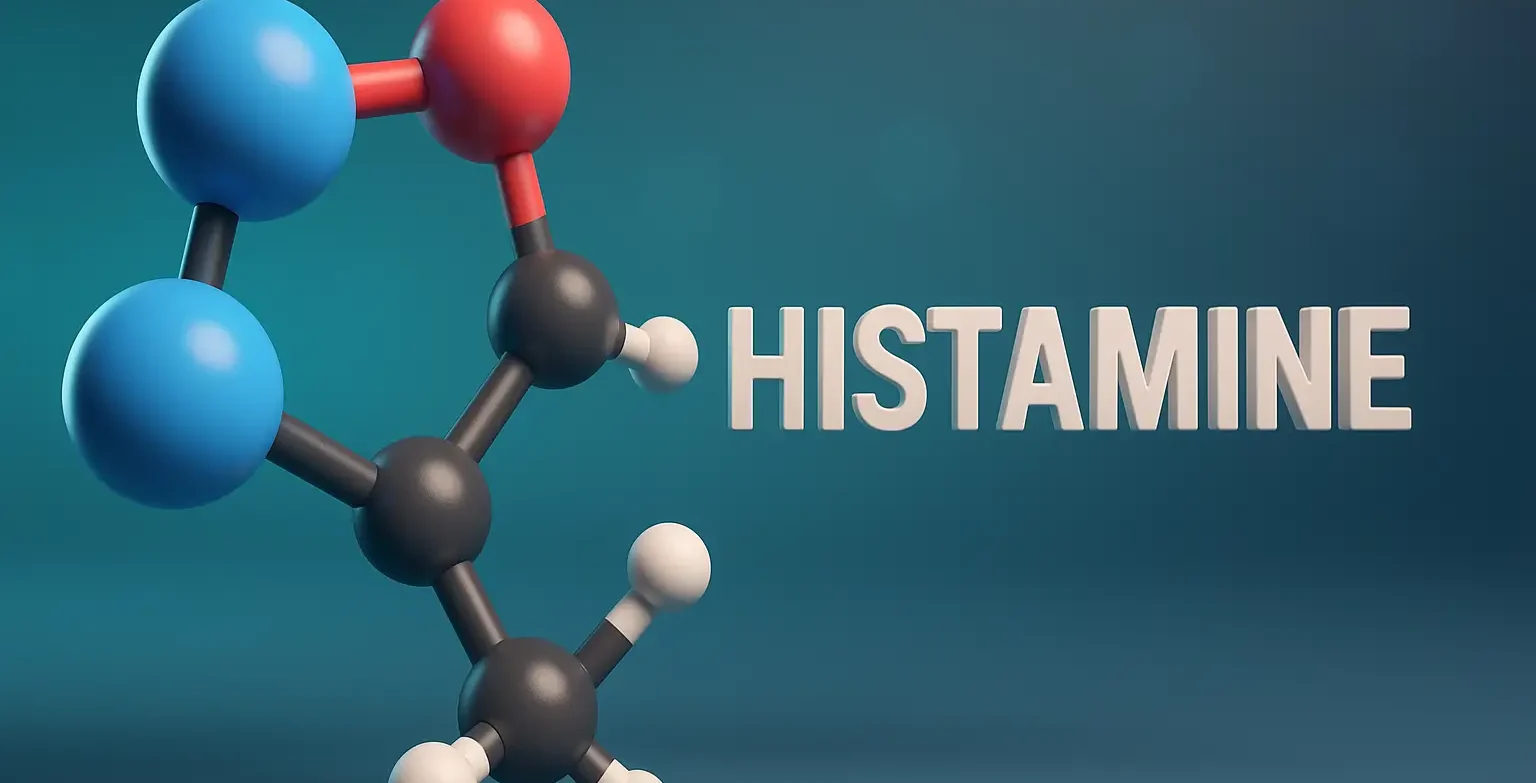Get an overview of histamine including its biological role effects on the body and involvement in allergies and immune responses.
Overview of Histamine:
- Chemical Nature: Histamine is an amine compound (hist + amine) released by tissues during allergic and inflammatory reactions, as well as in response to injury.
- Function: Acts as a local response against parasite infections and protects cells from foreign substances.
Structure:
- Histamine consists of an amine group (NH₂) attached to an imidazole ring.

Biosynthesis:
- Precursor: Histidine
- Enzyme: L-histidine decarboxylase catalyzes the decarboxylation of histidine to produce histamine.

Storage of Histamine:
- Primary Sources: Basophils and mast cells (types of white blood cells) store most of the body’s histamine in granules.
- Other Locations:
- Brain’s hypothalamus (acts as a neurotransmitter)
- Enterochromaffin-like (ECL) cells of the stomach
- High concentrations in skin, mucosal cells of the lungs, intestine, urinary tract, and cerebrospinal fluid.
Mechanism of Release:
Histamine is released from mast cells through a process involving:
- Sensitization: Exposure to an allergen leads to the production of Immunoglobulin E (IgE) antibodies.
- Binding: IgE antibodies attach to receptors on the surface of mast cells.
- Activation: Upon re-exposure, the allergen cross-links the bound IgE antibodies.
- Degranulation: This triggers mast cells to release histamine and other inflammatory mediators such as prostaglandins, kinins, and platelet-activating factor.
Common Antigens
- Antigens that can trigger histamine release include proteins and polysaccharides from sources like dust, pollen grains, food substances, venoms, toxins, detergents, and various chemicals.
Physiological Effects:
- Hypersensitivity Reactions: Itching, sneezing, watery eyes, runny nose.
- Smooth Muscle Contraction: Bronchoconstriction (asthma) and ileum contraction.
- Vasodilation: Causes hypotension.
- Gastric Secretion: Increases HCl secretion, leading to acidity.
- Inflammation: Causes pain and allergic reactions.
Catabolism or Degradation of Histamine
Histamine is inactivated by enzymes that alter its structure, preventing it from binding to its receptors:
- Diamine Oxidase (DAO): Metabolizes extracellular histamine.
- Histamine-N-Methyltransferase (HNMT): Metabolizes intracellular histamine.

